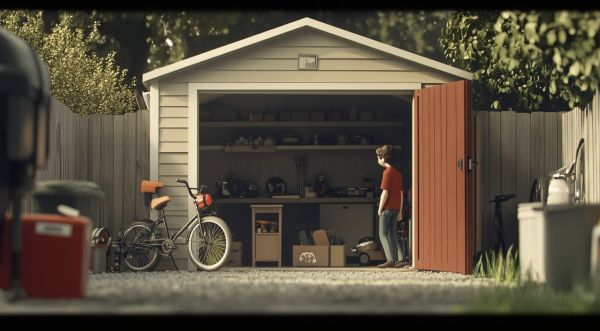
Shed Storage: Are your objects playing Hide and Seek? 🏡
Many of us have experienced it. This quest, sometimes desperate, for a specific object that we are 99% sure “must be” in the shed. At first, optimism reigns.
We open the door, a smile on our lips, ready to grab the coveted item. But quickly, that smile fades, replaced by a questioning frown. The object is not there, in evidence, as it should be. So begins a methodical search, or rather, what looks like it.
We move piles of wood, we lift dusty tarpaulins, we push rusty tools aside. And inevitably, that nagging thought: “He must be at the bottom.”
For what ? Why this magnetic pull from the back of the shed for everything we desperately seek? Is it a conspiracy orchestrated by our objects themselves?
A still unknown physical law that governs the movement of gardening tools and Christmas decorations? Or simply the result of our own organization... let's say, perfectible?
The Comedy of Lost Objects
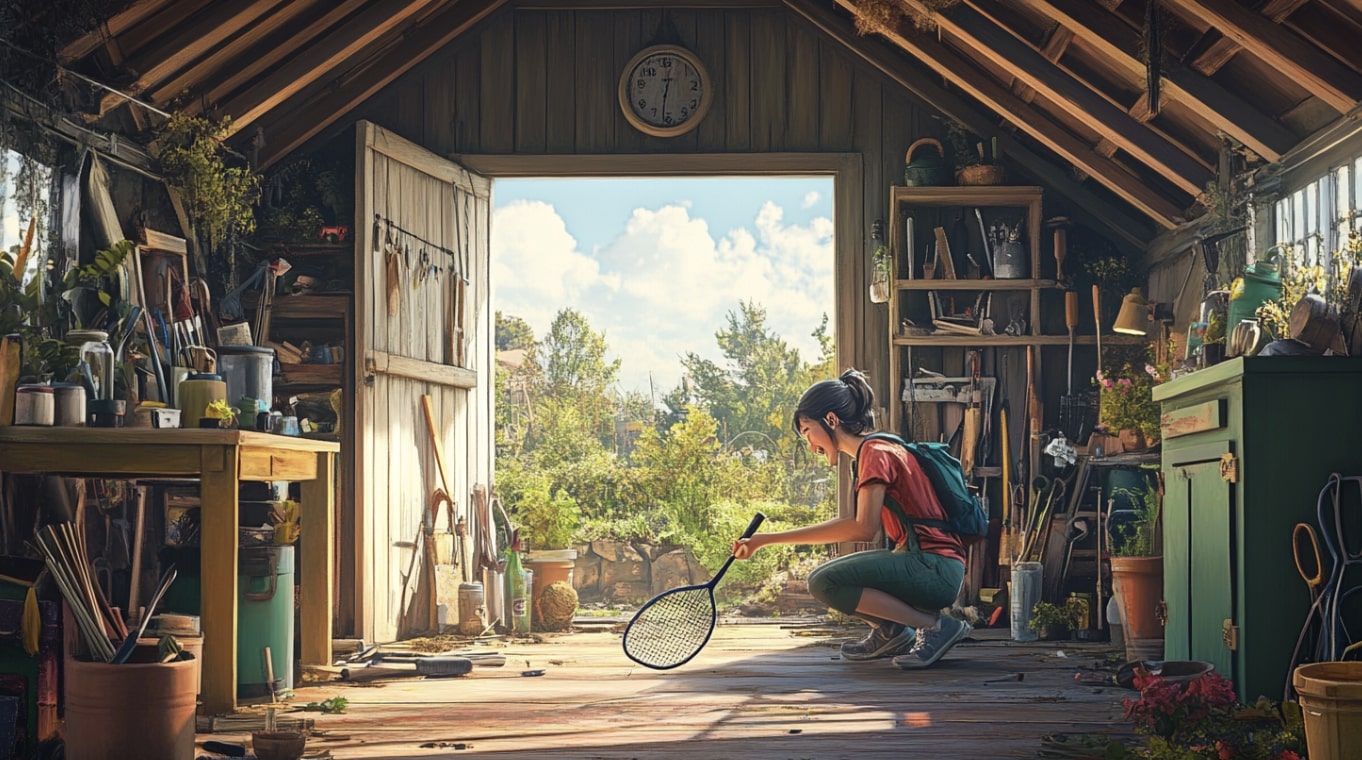
Imagine the scene: you promised your children that you would ride the brand new swing this weekend.
The sun is shining, the enthusiasm is palpable. All that's missing is the specific-sized adjustable wrench, the one you "carefully" stored in the shed after repairing the barbecue last summer. You enter with confidence, but the key cannot be found. The minutes pass, the frustration mounts.
You start moving things around randomly, swearing to yourself that next time you'll set up a system worthy of an Amazon warehouse.
Suddenly your hand hits something at the bottom. A glimmer of hope animates you. You pull the object out... and discover a broken badminton racket from 2003. Not the wrench.
You continue your exploration, and the back of the shed reveals a treasure trove of forgotten objects: an old rusty cooler, a torn kite, half-empty cans of paint whose color you don't even remember. But still not this famous key.
This situation, as banal as it may be, has an intrinsically comic side. We often find ourselves in the shoes of the amateur archaeologist, exploring the vestiges of our own oversights.
The shed then becomes a sort of disordered time capsule, where objects from the past resurface unexpectedly, at the moment when we are desperately looking for something specific for the present.
Background Theories: Gravity, Forgetting and Disorganization
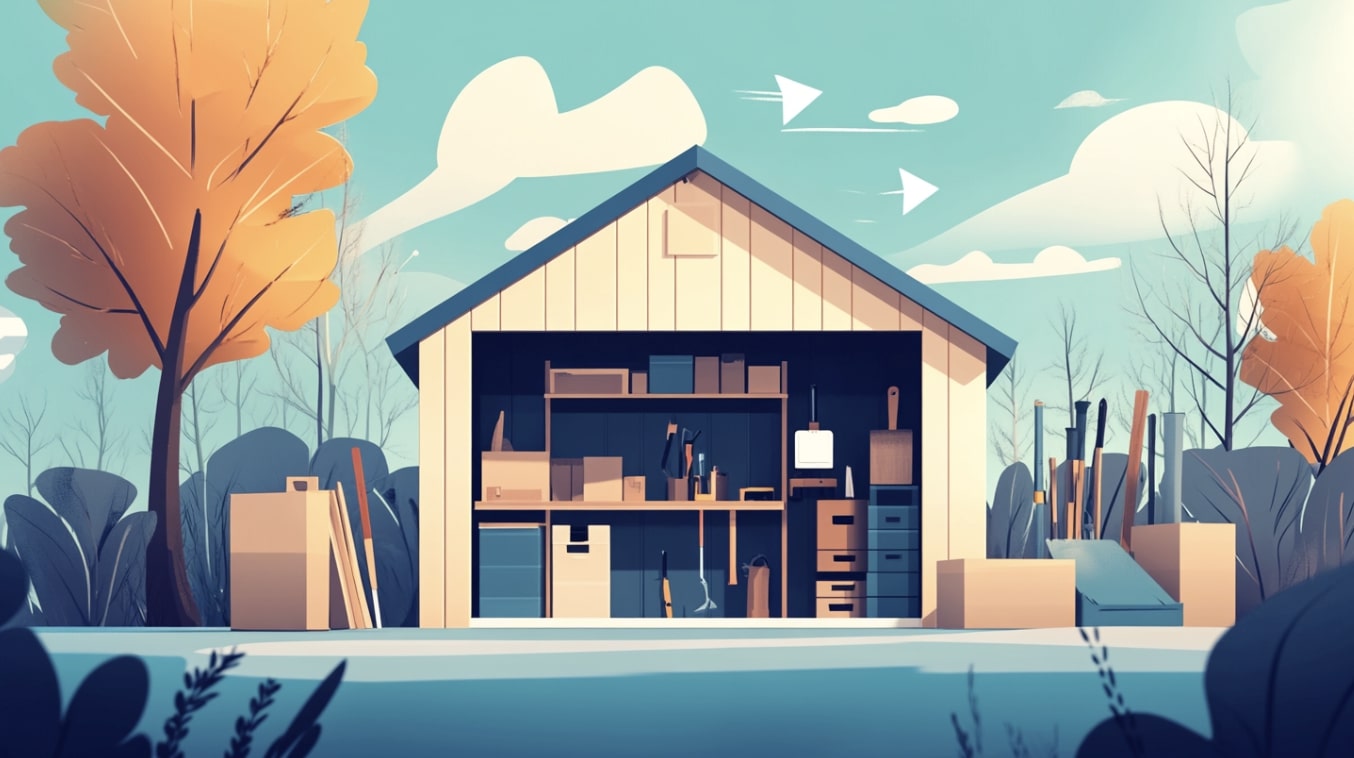
Several theories attempt to explain this strange phenomenon. The first, and simplest, is the theory of gravity and time. Items are often placed at the front of the shed when first acquired.
As time goes by and new additions are made, they are naturally pushed back to make room. It's a kind of reverse natural selection: newcomers take center stage, while veterans retreat to the shadows at the back.
Then there is the “selective forgetting” theory. We tend to remember items that we use frequently or that have special sentimental value.
The others, those we only need occasionally, fall into the limbo of our memory and end up being relegated to the back of the shed, out of our field of vision and therefore, out of our mind.
But the most plausible theory remains that of chronic disorganization. Let's be honest, how many of us can boast of having a perfectly organized shed?
For most, it's more of a multipurpose storage space where everything that doesn't belong elsewhere ends up landing. In this happy mess, the logic of storage is often absent, and objects end up piled up without any coherence.
Result: what we are looking for inevitably ends up being found under a pile of other things, and the deeper this pile is, the more likely the object we are looking for is to be found at the bottom.
Les Anecdotes du Cabanon: Stories of Treasures Found (or Not)

Everyone has their share of shed stories. The friend who found a pair of skis forgotten for ten years, just in time for an unexpected snowstorm. The neighbor who discovered an old trunk full of moving family photos while looking for a simple rake.
Or the one who spent hours turning his shed upside down to finally find the famous key... in his pocket.
These anecdotes, often tinged with humor and sometimes a touch of frustration, demonstrate the unpredictable nature of our sheds. They are both dumping grounds for our useless objects and safes for our forgotten memories.
The line between the two is sometimes blurry, and that's precisely what makes the search at the bottom of the shed so random and, let's face it, sometimes fun.
From Chaos to Order: Tidying Strategies to Tame the Bottom
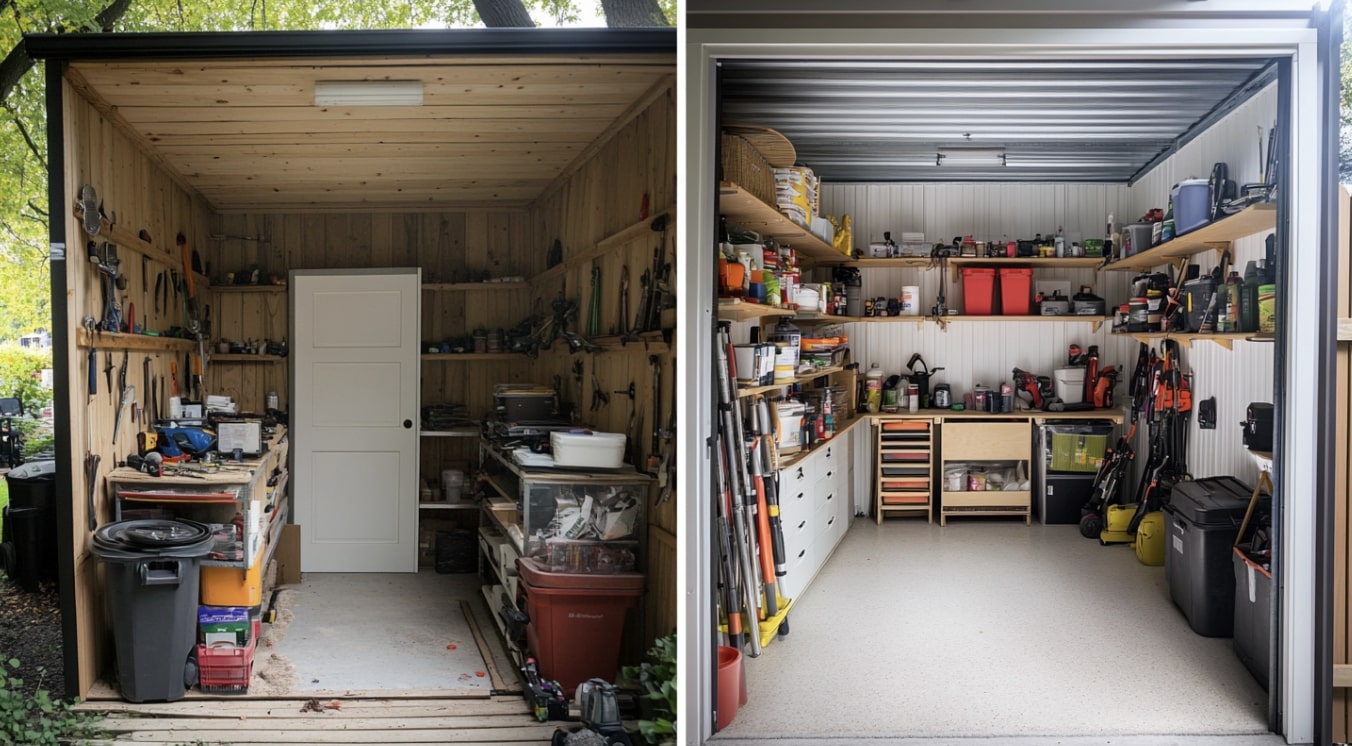
Faced with this natural propensity of objects to migrate to the bottom, a question arises: is it possible to break this infernal cycle? The answer is yes, with a little effort and method. Here are some strategies to transform your shed from a black hole of lost items into a functional and organized storage space:
- The Great Cleanup: The first step, and undoubtedly the most difficult, is to completely empty the shed. Take everything out, sort, throw away what is broken or useless, donate what can still be used. This is an opportunity to take stock of what you really own and get rid of the superfluous.
- Categorization: Once you've sorted, group the items into categories: gardening tools, sports equipment, seasonal decorations, etc. This will allow you to have a clear view of what you own and make storage easier.
- Le Zoning : Divide your shed into different areas based on these categories. For example, an area for gardening near the door, an area for tools further away, and an area for seasonal items at the back (but organized!).
- Vertical Storage: Make the most of the vertical space in your shed. Install shelves, hooks, wall brackets to hang tools, garden hoses, bicycles, etc. This will free up floor space and make items more accessible.
- Boxes and Bins: Invest in clear storage boxes and bins with clear labels. This allows you to store small items, screws, nails, seeds, etc., in an orderly manner and find them easily.
- The “First In, First Out” Rule: For items you use regularly, try applying this rule. Place new purchases in the back and old ones in the front. This will save you from having to constantly move items to reach the ones you need.
- Regular Maintenance: Once your shed is organized, don't let up on your efforts. Take a few minutes each season to put away new items, check the condition of your tools and make sure everything is still in its place.
The “Funcabanon”: When Storage Meets Pleasure
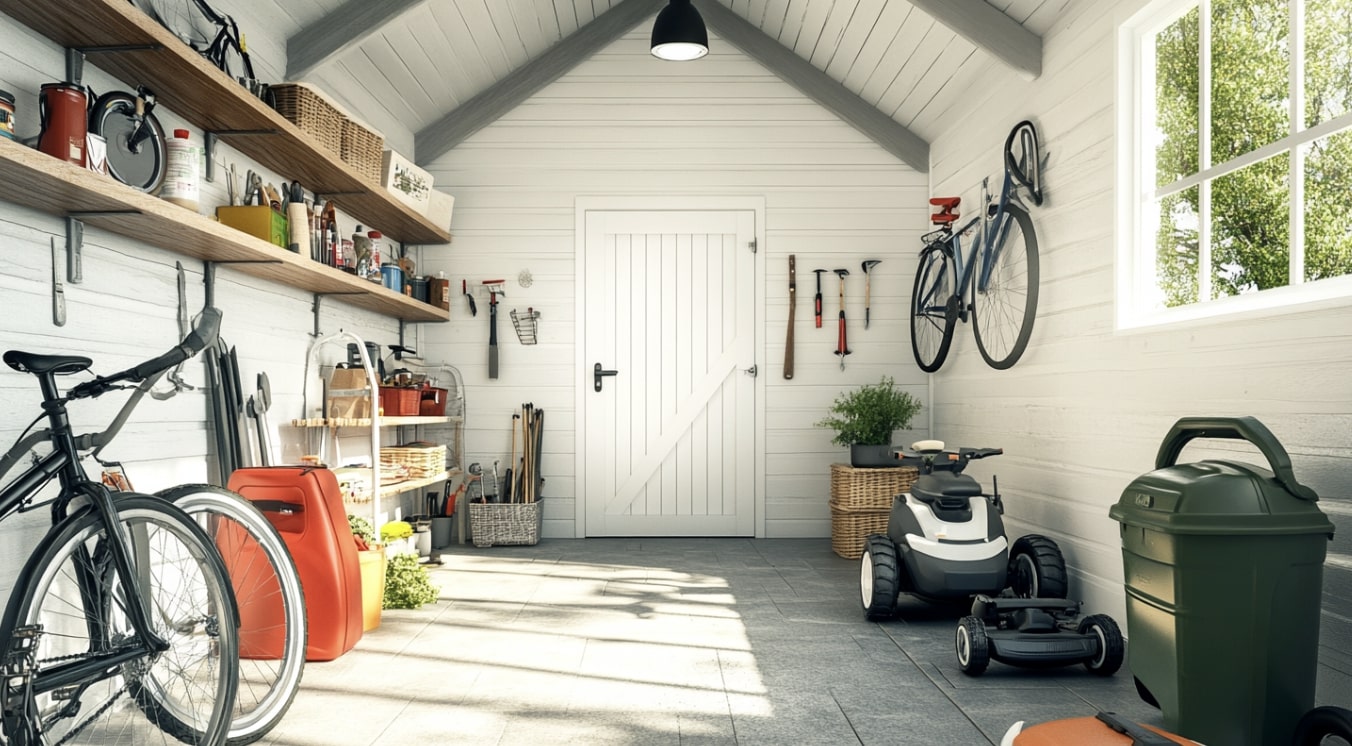
The idea of the “funcabanon” goes beyond simple storage space. It's about transforming your shed into a place that is not only functional, but also pleasant to use. Imagine a well-lit space, with a work surface for crafting, nicely organized shelves and maybe even a little corner to relax.
A well-appointed and aesthetically pleasing shed naturally encourages better storage and makes searching for items much less painful.
You could add decorative elements, like pictures, plants, or even a small radio to listen to music while you garden or craft.
The goal is to create a space where you want to spend time, rather than a dark, messy place you try to avoid.
The Shed Bestiary: The Strange Creatures That Can Hide There
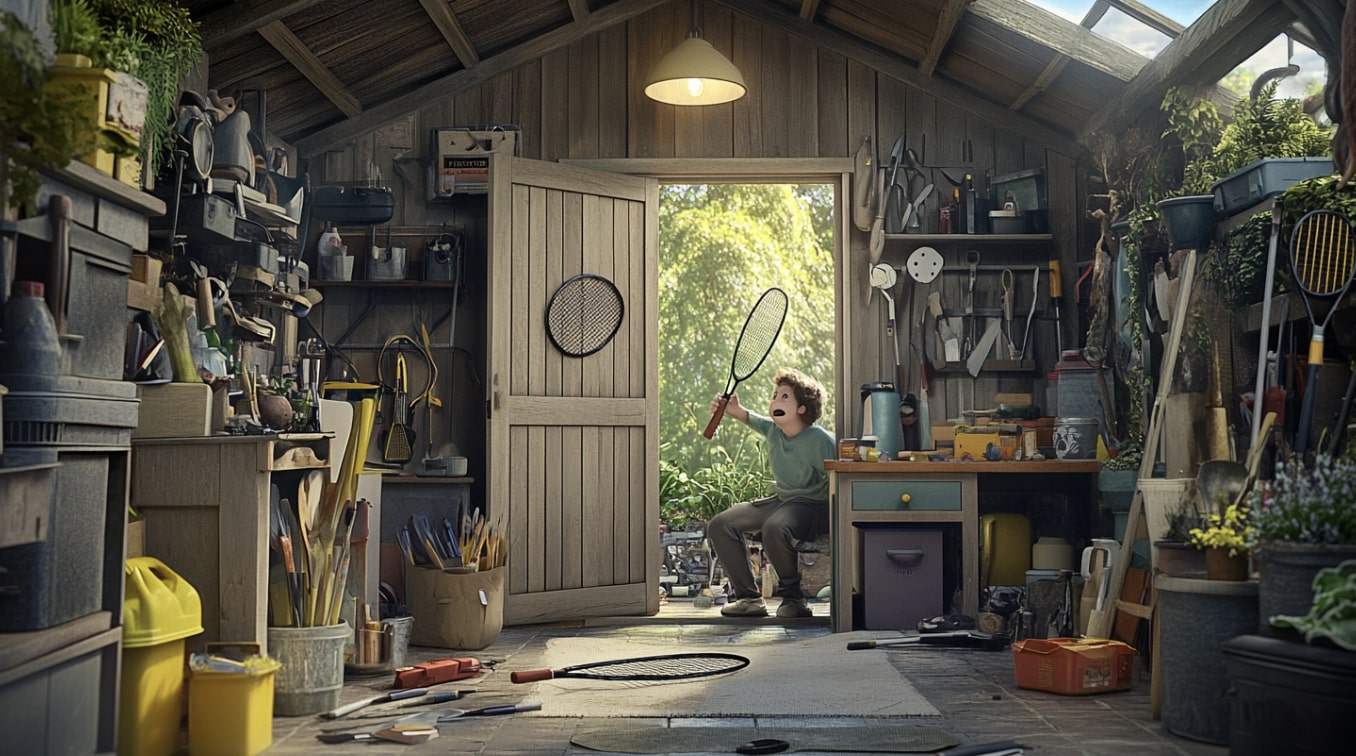
Beyond classic gardening tools and forgotten Christmas decorations, the back of the shed sometimes conceals a surprising ecosystem of heterogeneous, even downright strange, objects.
These “creatures” of the bazaar, often silent witnesses to our past lives and our unfinished projects, contribute greatly to the joyful disorder that characterizes our sheds.
Let's discover some of the most common species that you might come across during your next expedition to the bottom of the shed:
👉 The Forgotten Technological Fossil:
This species includes old cell phones with cracked screens, MP3 players that no longer charge, video game consoles from another era, and mysterious cables whose usefulness we no longer remember. They often hibernate in dusty boxes, waiting for a hypothetical comeback that will probably never happen.
👉 The Ephemeral Habit of Light:
These include Halloween costumes from previous years, sequinned evening outfits that we only wore once, outdated sports jerseys, and clothes that are too small or too big that we keep "just in case." They hang sadly from rusty nails or are piled up in plastic bags, waiting for the next costume party or an improbable change in body shape.
👉 The Unfinished DIY Project:
This category includes half-cut pieces of wood, started cans of paint, never-used sewing patterns, incomplete model kits, and all those ambitious projects that we started with enthusiasm before abandoning them halfway through due to lack of time or motivation. They represent our creative aspirations put on hold, perhaps one day awaiting renewed interest.
👉 Retired Sports Equipment:
There are tennis rackets with broken strings, deflated soccer balls, rusty rollerblades, chipped skateboards, and all those accessories that bear witness to our past attempts to lead a more active life. They gather dust in a corner, reminding us of our good intentions (and sometimes our hurts).
👉 The Bulky Vacation Souvenir:
This species includes shells collected on the beach ten years ago, kitschy trinkets purchased in souvenir shops, yellowed postcards, and outdated tourist guides. They are often kept out of nostalgia, even if they no longer really have any practical use.
👉 The “You Never Know” Object:
This is the most mysterious category. There we find things like an old pipe whose provenance we do not know, a part of a machine whose use we have forgotten, a book which we no longer remember having bought, or even a broken electrical appliance which we keep "in case it could be used as spare parts". These objects are guardians of the mysteries of our past and add a touch of unpredictability to each exploration of the shed.
The presence of this motley bestiary at the bottom of our sheds greatly contributes to the difficulty of finding what we are really looking for.
You have to navigate through this jungle of forgotten objects, sometimes wondering how certain things could have ended up there.
But let's face it, this is also what gives the (slightly chaotic) charm of our sheds. Each unexpected discovery is a little adventure in itself, a dive into memories and past projects.
So, the next time you venture into the depths of your shed, keep your eyes peeled.
You might well come across one of these strange creatures there, and who knows, maybe even rediscover a forgotten treasure that you weren't looking for!
The Mystery Persists, But Order is Possible
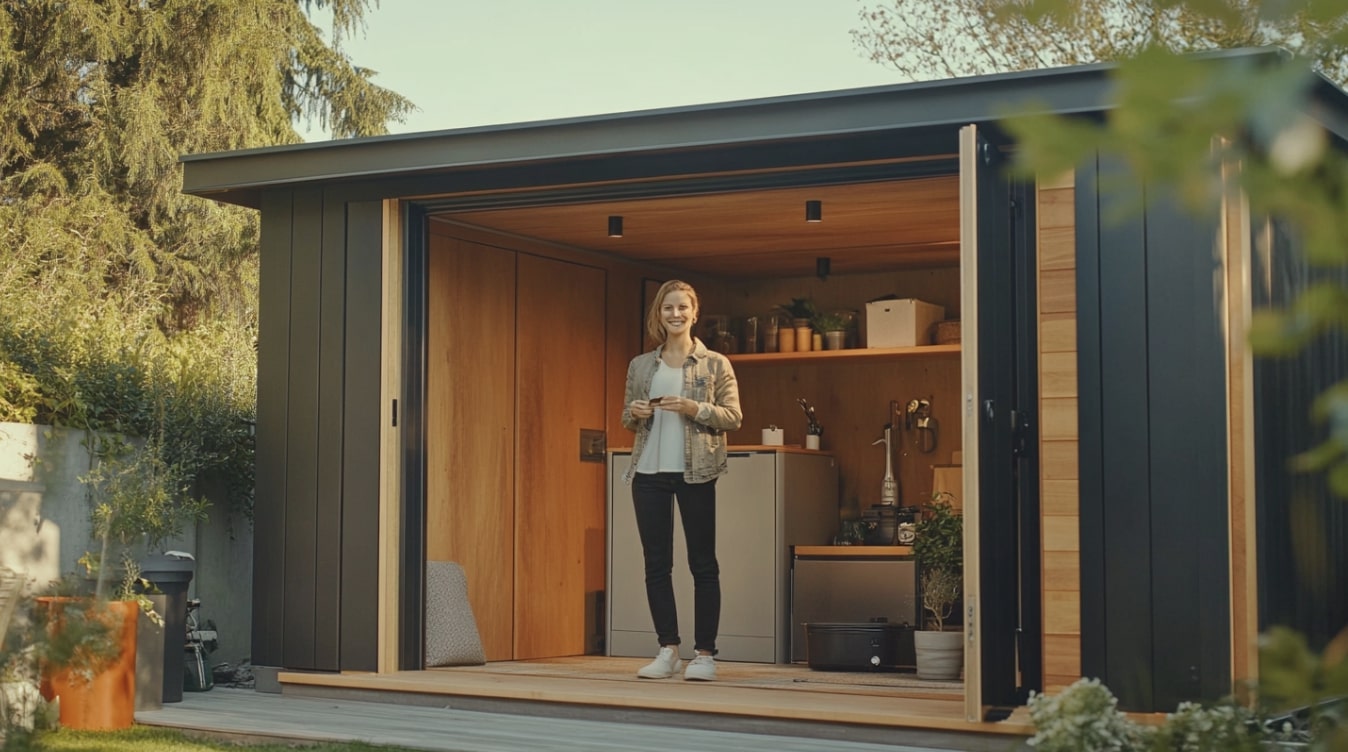
So why is everything we're looking for always at the bottom of the shed? The answer is probably a combination of factors: gravity, forgetfulness, and above all, our tendency to let disorder take hold.
But as we have seen, it is possible to break this cycle and transform our shed into an efficient and even pleasant storage space.
So the next time you embark on a quest deep in your shed, remember that you are not alone. Many of us share this experience.
And who knows, surely by adopting a few simple storage strategies, you will eventually unravel the mystery at the bottom of the shed and finally find that object that you have been looking for for so long. But be careful, you risk discovering many other forgotten treasures along the way!